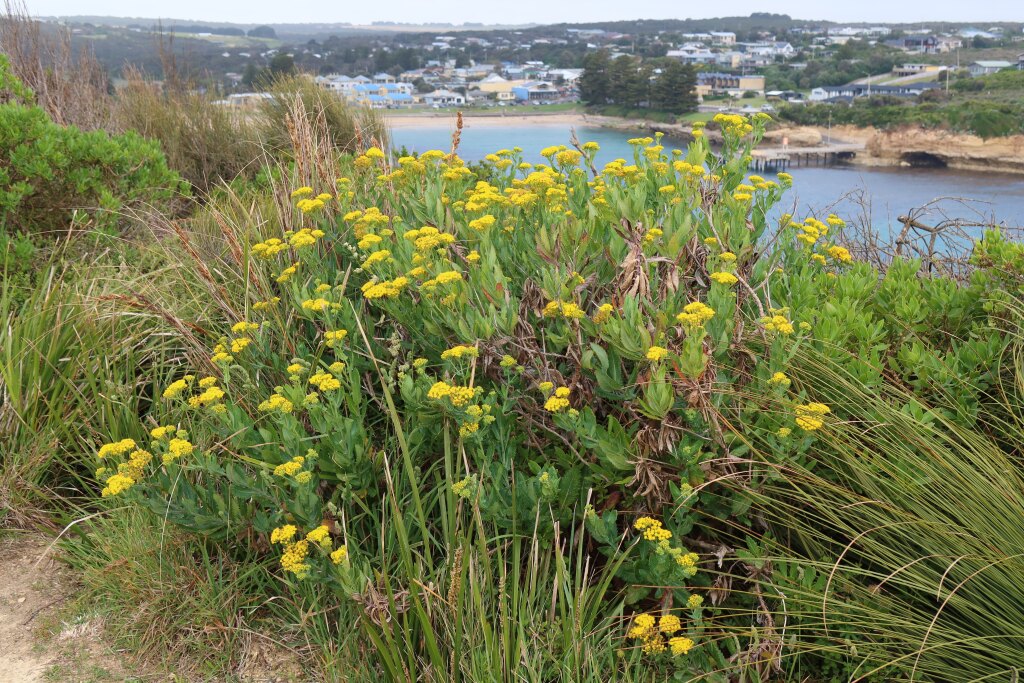Senecio odoratus
Hornem. Scented GroundselBushy, erect or somewhat sprawling subshrub to 1(–1.7) m high, aromatic, more or less glaucous all over. Leaves obovate to ovate or lanceolate, 5–14 cm long, 1–4 cm wide, mostly cordate or auriculate at base, sometimes attenuate, usually stiff and somewhat fleshy, entirely glabrous or sometimes with coarse hairs and sparsely cobwebbed beneath; margins dentate, or the uppermost leaves sometimes entire. Inflorescence corymbose, mostly 3–6 cm across with 20–80 capitula, or corymbs coalescing and then to c. 15 cm across with 500 or more capitula; capitula non-radiate; involucre cylindric, 3.5–7 mm long, glabrous; bracts (6–)7–10; bracteoles present; florets 10–16, all bisexual. Cypselas cylindric, 1.6–2.8 mm long, brown, shortly papillose-hairy in rows; pappus of slender hairs 4–7 mm long, deciduous. Flowers Oct.–Jan.
MuM, GleP, Brid, VVP, GipP, OtP, WaP, Gold, CVU, GGr, DunT, EGL, EGU, WPro, HSF, HNF, OtR, Strz. Largely confined to the coast, from the South Australian border to near Lakes Entrance, but with several isolated inland occurrences e.g. in the Grampians, Mt Langi Ghiran, Bacchus Marsh and Lysterfield areas.
Two varieties have been recognised based on the length: width ratio of the leaves. Senecio odoratus var. longifolius M.E. Lawr. has narrower leaves than var. odoratus and is confined to the Eyre Peninsula and Kangaroo Island in South Australia. However, a population of S. odoratus at Werribee Gorge that has most morphological features more similar to var. odoratus, but has narrow lanceolate leaves only to c. 1 cm wide, resembling those of var. longifolius. Senecio odoratus var. longifolius appears to be at the narrow extreme of a continuum of leaf length: width ratio and its recognition overlooks other significant morphological variation such as leaf shape, degree of auricular development, leaf hairiness and capitulum glaucosity (Thompson 2004b). Consequently, it is not recognised here.
 Spinning
Spinning

